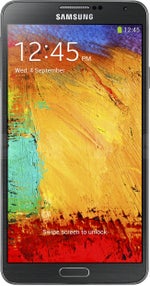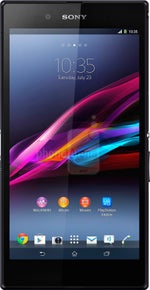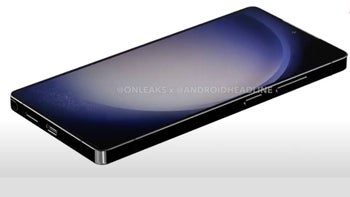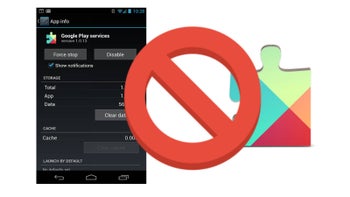Huawei Ascend Mate 2 Review

Introduction
Big phones are giving smartphone companies some banging business, as many consumers have ceremoniously adopted the notion of owning these gargantuan sized things. Huawei entered the foray last year with its Ascend Mate, but this year’s successor brings forth wide 4G LTE connectivity support – to make it compatible with more LTE networks around the world. Naturally, other hardware improvements are in tow with this phablet, but will they be enough to stand tall in a crowded class?
The package contains:
- microUSB cable
- Wall charger
Design
Its design is as generic as they come. The Huawei Ascend Mate 2, which manages to have a smaller footprint to its predecessor – while still maintaining the same sized display. Honestly though, the design is as bland and uninspiring as they come, as it doesn’t try to go in a bold, new direction. Instead, it’s your typical plastic constructed body that bears a faux-pas metal accented bezel. For the most part, its construction feels decent, but it’s just not aggressive enough to contend with the more sophisticated designs out there.
That silver colored bezel bears all of the typical components, like the microUSB 2.0 port, power button, volume control, various microphones, and 3.5mm headset jack. The flimsy back cover can be removed, where we’re then given access to its microSD and microSIM slots – though, the battery is fixed, so it can’t be removed.
Display
Aside from its resolution, the display has enough quality elements to make it a usable thing.
As with all phablets, the main draw for the Huawei Ascend Mate 2 is its gigantic sized 6.1-inch IPS display. Indeed, it’s one of the many things out there that pushes the threshold of what’s practical to have in a smartphone, but it’s just unfortunate that it doesn’t see too much of a separation from its predecessor.
For starters, its resolution remains unchanged at 720x1280, which isn’t bad per se, but it would’ve been nice to see it sporting something a little bit higher – more so after having a year to do it. Despite that, the panel radiates with a stronger output thanks to its peak brightness of 457 nits. Strangely, they’ve removed the option to modify the display’s color representation, but we’re not too upset because it’s pretty accurate on its own.
Interface and Functionality
A few tweaks here and there help to elevate the Emotion UI over last year’s offering, but it’s still sitting on top of Android 4.3 Jelly Bean.
Huawei Ascend Mate 2 comes with the company's latest Emotion UI 2.0 Lite interface , which is running on top of Android 4.3 Jelly Bean. Huawei is one of the smartphone makers that remove the usual app panel we’re accustomed with Android – and instead, are throwing all of the app icons into the homescreen. The problem with this is that things can quickly get out of hand, where the homescreen becomes crowded and disheveled looking if you’re not good at organization.
In easing the way we interact with the Ascend Mate 2, Huawei offers a “one-handed UI” option that only works on very few core apps – and we mean very few! Specifically, the on-screen keyboard and dial pad are shrunken down to make them usable with one-handed operation. In all fairness, though, it would’ve been more useful if Huawei optimized other core apps for this mode.
Another interesting feature with the interface is the option to switch over to its “simple” mode. Naturally, it’s for users who prefer a more streamlined, colorful looking layout with big icons. In fact, it has an almost Windows Phone-like feel to it, as the interface is comprised out of these colorful looking tabs, but it is not as polished and good looking.
Functionally, we’re pleased by what the Huawei Emotion UI has to offer, but the most pressing matter here is knowing how quickly it’ll be updated to Android 4.4 KitKat.
Processor and Memory
The performance is undoubtedly tested by more demanding things.
Our review unit is powered by Huawei’s new in-house quad-core 1.6GHz ARM Cortex-A7 CPU, paired with 2GB of RAM and the Adreno 305 GPU. Basic operations are handled effortlessly, but it strains against more processor intensive things – like running some of today’s more demanding 3D games.
Out of the box, its advertised 16GB of internal storage actually translates to a usable 12.69GB. That’s more than a practical amount for the average user, but it’s nice to know that it can be supplemented thanks to its microSD slot.
Internet and Connectivity
This is a big deal for Huawei, mainly because the Ascend Mate 2 is the company’s first wide band 4G LTE-enabled smartphone – something that permits it to be compatible with several LTE standards, such as the TDD-LTE and FDE-LTE bands. Therefore, it lends itself in supplementing the web browsing experience, which is already made great thanks to its spacious sized display.
Beyond its notoriety for being Huawei’s first 4G LTE equipped smartphone, this GSM-based thing packs the same set of modern connectivity features found in other phones. Specifically, they include aGPS with Glonass, Bluetooth 4.0 with EDR, and dual-band 802.11 a/b/g/n Wi-Fi. However, it irks us that it’s missing NFC.
Camera
Shutterbugs will be especially happy to know it’s a versatile snapper for photos, but it’s lacking with its video recording.
For those familiar with last year’s Huawei Ascend Mate, the camera app interface on this year’s model is almost identical – both in layout and features set. At the core of it all, the interface is simple and mostly menu driven, as that is how various manual controls and shooting modes are accessed. Again, it’s nothing fancy, but at least it encompasses a decent amount of things.
Upping the ante, Huawei has increased the camera to a beefy 13-megapixel one, which clearly adds more detail. Overall, images are very good, but they still have their drawbacks, like some images coming a little underexposed. Another minor problem is that photos are verly soft around the edges – but they are sharp towards the center. But as a whole, the Ascend Mate 2 has a great camera for its class that is usable even in low light.
Video recording, strangely enough, is accompanied with several unwanted results that diminishes its overall quality. Out of everything, it’s the softer toned visuals and muffled audio recording that commands our attention, so the results aren’t as pleasant in comparison to its still image quality.

Multimedia
Thanks to its large screen, it’s the ideal thing for watching videos.
In addition to the Google Play Music app, the phone is packaged along with Huawei’s updated music player. This time around, we can tag songs into 4 mood categories (happy, sad, serene, and energetic), which is accessed from the main screen. A neat addition for those don’t mind categorizing songs individually, the player also has the ability to display lyrics too. With its rear-facing speaker, we can’t complain about the crisp and clean tones it’s able to muster up.
Bigger screens are preferred when it comes to watching video, so there’s no surprise that the Huawei Ascend Mate 2 falls into the same boat. Videos come to life and play flawlessly, despite the fact that it’s only sporting a 720p resolution screen.
Call Quality
Voices have barely any distortion, but its volume output could’ve been better.
Delivering nearly the same audible results as last year, call quality is almost exquisite here as well. Voices on both ends of the line exhibit strong, clear, and crisp tones, but the earpiece and speakerphone volumes tend to be a little lacking.
Battery
Hands down, it has the longest battery life in a smartphone we’ve tested!
Oh. My. Gawd!! The Huawei Ascend Mate 2 rockets to the top of our chart, supplanting the Sony Xperia T2 Ultra in the battery life department. Tucking away a monstrous sized 3900 mAh battery, it delivers an outstanding 11 hours, 26 minutes of juice in our battery benchmark test. Having so much longevity, we’re astounded by how long lasting this thing really is.
Conclusion
Concurrently marking this special occasion, where the Ascend Mate 2 is Huawei’s first smartphone to feature wide band 4G LTE support, the phone is being treated to royalty by being sold through Huawei’s US-centric online shop. Impressively, consumers won’t have to fork over a load to pick up this giant, since it’s attached with a very affordable outright cost of $299.99 online – and we have to emphasize that’s the outright, no-contract cost. It might not be a conspicuous contender like some of the other brand names in the category, but rest assured, there are plenty of good things that make the Huawei Ascend Mate 2 an attractive offering for those on a budget and don’t want to commit to a contract.
Software version of the review unit:
Android Version: 4.3
Emotion UI Version: EmotionUI 2.0 Lite
Kernel Version: 3.4.0-g9428221
Build Number: MT2-L03V100R001C00B126

































Things that are NOT allowed: